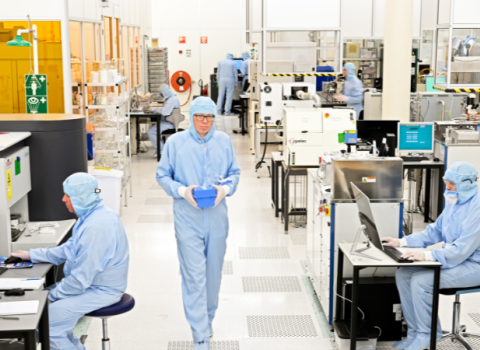The European Union has been granted observer status at the Sesame synchrotron, allowing scientists from across Europe to apply for jobs and carry out research at the facility, which is due to be commissioned in the middle of next year.
Sesame – Synchrotron-light for Experimental Science and Applications in the Middle East – situated 35 kilometres north west of the Jordanian capital Amman, is the first synchrotron light source in the Middle East and the region’s first true centre of scientific excellence.
Observer status allows European researchers to bid for research contracts and apply for staff positions with the facility. The EU, which will be represented at meetings by a civil servant from its research directorate, will not be a voting member in Sesame’s management structure, or make any annual financial contribution.
“Co-operation in research and innovation with our Middle East partners is a priority for the EU. Sesame is a powerful example of how science and research can bring diverse nations together,” said Carlos Moedas, the EU’s Research Commissioner, who was in Jordan to honour the occasion.
European contribution
The late Gustav-Adolf Voss, a former director of Germany’s Deutsches Elektronen-Synchrotron (DESY), and Stanford University’s Herman Winick, are credited as the main proponents for building a synchrotron in the region. In 1997 Voss suggested that rather than scrapping the Berlin synchrotron 'Bessy I' when it was due to be replaced, it should be donated to the Middle East. In recognition of his contribution, one of the meeting rooms at Sesame is to be named after Voss.
Sesame, with its homage to the "open sesame" command to unlock a treasure trove in the tale of Ali Baba and the Forty Thieves, is a collaboration between Israel, Bahrain, Egypt, Iran, Cyprus, Pakistan, Palestine and Turkey.
Following Voss’s proposal, the countries were brought under the auspices of Unesco, with Sesame formally getting off the ground in 2003.
Sesame is touched with many European fingerprints.
The governing council is headed by a British physicist, Chris Llewellyn Smith, a former director of CERN.
Alongside the storage ring that came from Bessy, the magnets that guide the electrons around the accelerator were assembled and tested at CERN, in a project funded by a €5 million grant from the EU Framework Programme 7.
Some of the beam lines that collect the light emitted by the accelerator came from the synchrotron in Daresbury, UK.
In addition to €5 million from the EU, the project has received a total of €12 million from EU member states. The EU is also supporting the training and international exchange of staff with other European synchrotron infrastructures.
“The EU has been the largest external donor to the project,” said Smith. “I am sure Sesame will share a journey of scientific excellence and discovery to match that of CERN's Large Hadron Collider,” Moedas said.
Science diplomacy
The United Nations diplomats at Unesco have succeeded in keeping political sensitivities on the side lines, in a grand example of what Moedas called science diplomacy.
As a result, politics – so far – has not meddled with the project. In fact, the biggest setback to date was unusually heavy snowfall in the region. “It caused the roof of Sesame to collapse in 2013 so we spent the whole of last year working under an open sky,” said Smith.
“It’s a project of peace in a region where communication is difficult,” said Caterina Biscari, director of Spain’s ALBA synchrotron.
Hermann Franz, deputy director for photon science at the DESY synchrotron in Hamburg agreed. “I think it’s a great idea; it brings together a group of countries that don’t otherwise have too much contact, I’m afraid.”
Brazil, China, Japan, Kuwait, Switzerland, the Russian Federation, the US, and EU members France, Germany, Greece, Italy, Portugal, Spain, Sweden and the UK, also have observer status to the project.
More synchrotrons needed
Scientists are used to going on the road to access beam time at the world’s synchrotron facilities and the news of the EU-level commitment to back research at Sesame was greeted warmly in Europe.
The world is crying out for more of these facilities, said Franz, even if they don’t come cheap. “There’s a big need for them,” he said. “Here at DESY, we’re waiting for experiments to get beam time; we get three times the experiments than we can make room for.”
Biscari agrees there is a need for more synchrotrons. “It’s one of the first science projects I would recommend for any country,” she said. “Every new beamline creates new uses.”
Andrew Harrison, CEO of Diamond Light Source, the UK synchrotron, said the project will go some way to helping solve the problem of the brain drain of scientists from the Middle East. “At present, [they] have to travel to other facilities overseas,” he said. Members of his team have provided advice to Sesame and organised training visits to the UK site.
There are now more than 60 synchrotrons in operation in 19 countries, almost all of them in the developed world. There are ten in Europe, of which the largest is the European Synchrotron Radiation Facility in Grenoble, France.





 A unique international forum for public research organisations and companies to connect their external engagement with strategic interests around their R&D system.
A unique international forum for public research organisations and companies to connect their external engagement with strategic interests around their R&D system.